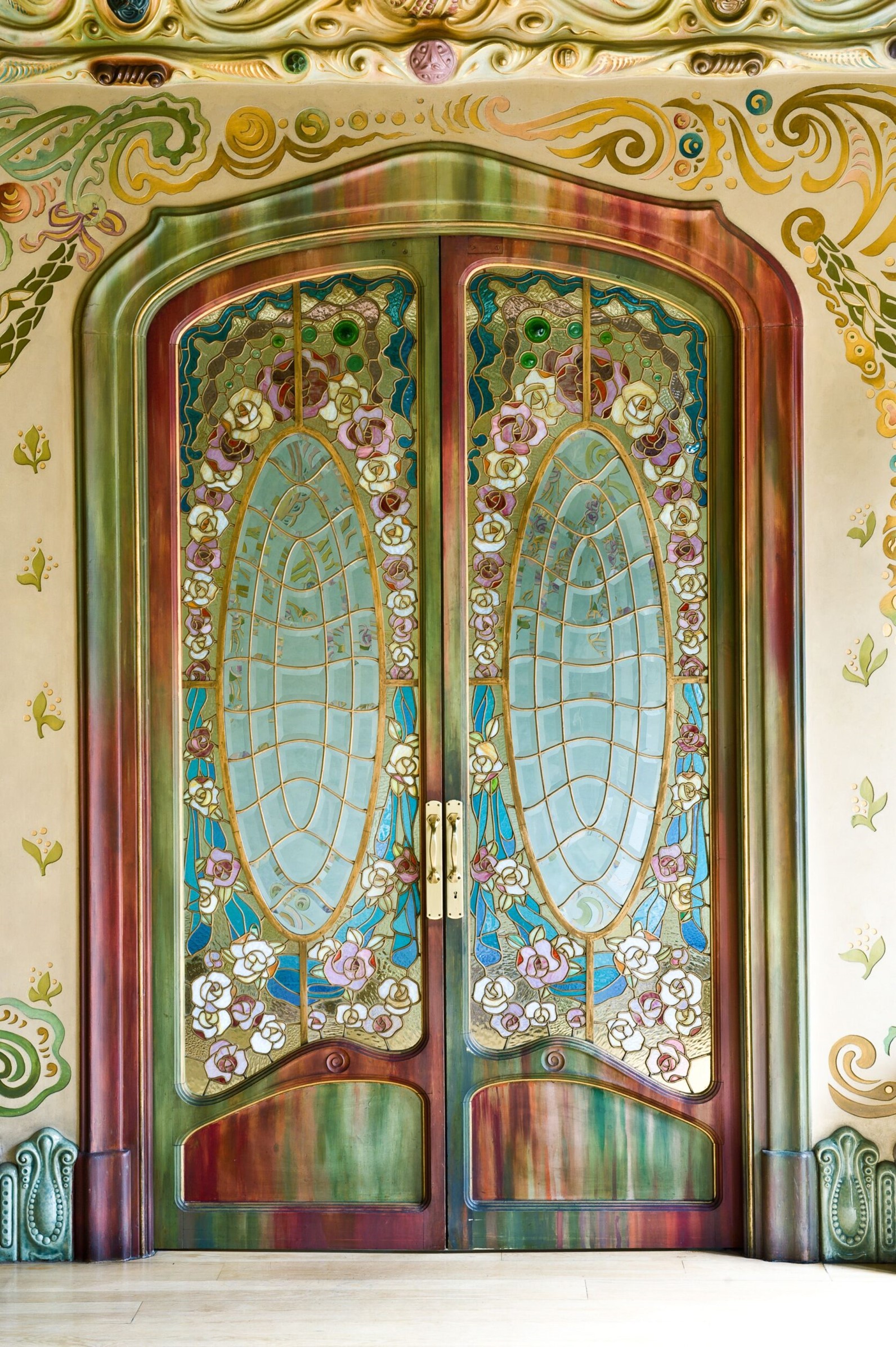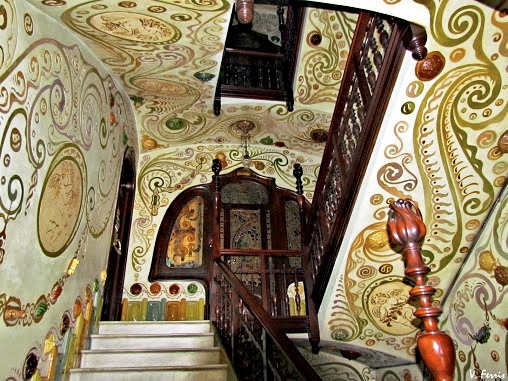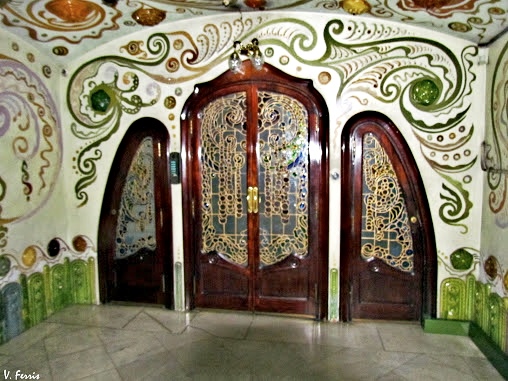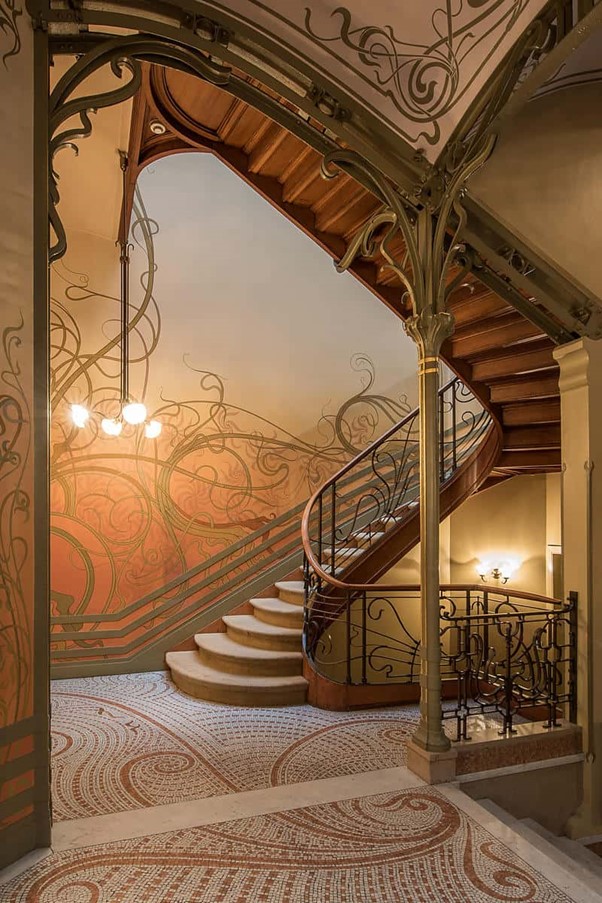Like a tribute to Gaudí, the Casa Comalat contains many elements of Gaudí’s architecture, and is one of the most original examples of home-grown art nouveau in Barcelona: modernisme. Two distinct façades, both of them showing the influence of the curve redolent of the work of the Reus-born maestro, arouse our curiosity to go and take a closer look at this beautiful and unique building.
The architect Salvador Valeri i Pupurull worked on the Casa Comalat from 1906 to 1911, and was clearly influenced by Gaudi’s organic forms. Dating from the final phase of the “modernista” era, this is a highly original building comprising two façades with a common element: the Gaudiesque curve. The main façade, which overlooks Barcelona’s Avinguda Diagonal, is made of stone and is more symmetrical and regular in shape. At street level, there is an interesting wrought-iron doorway and, above it, a central gallery surmounted by a pinnacle. At the top, a series of openings cut into the façade and surrounded by stone garlands jut out above the remaining curved balconies with their floral motifs.

The building is surmounted by a turret in the shape of a harlequin’s hat clad in glazed green ceramics. This colourful element dominates the rear façade of the building which overlooks Carrer Rosselló, and is freer and more informal in style.
The irregular wooden galleries give the façade a dynamic look, and the ceramics that decorate the entire façade lend a splash of colour.
The parabolic arches over the doors on the ground floor give the building its Gaudiesque feel, and are just another example of the beauty of this unique building.



